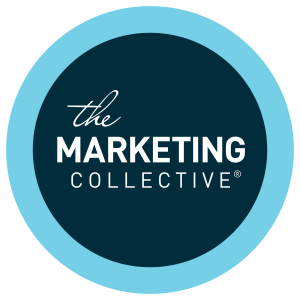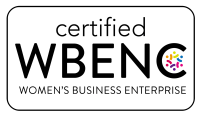Digital Marketing
There are more ingredients in today’s marketing mix than ever. And it’s no surprise that digital marketing efforts are an ever-increasing piece of the pie. The breadth and depth of these options are exciting – and daunting. There are benefits – and challenges.
Not only is it difficult to try to do everything, it’s often unnecessary. Understanding the digital marketing options available, how they work, and the benefits and drawbacks they present is a helpful first step toward building an approach to digital marketing that will propel your brand.

What is Digital Marketing?
The name is self-explanatory, but just to be completely clear – digital marketing refers to marketing efforts that appear “on screen”, that is via a computer, phone, tablet, or other device.
Digital marketing utilizes the internet and online-based technologies to promote a product or service.
It takes many forms – video, display and paid ads, search engine marketing, email, social media, texts, multimedia, and more – and it’s fair to say most Americans are exposed to numerous digital marketing campaigns each and every day.
Why is Digital Marketing important?
Now that 85% of Americans own a smartphone, most people are susceptible to digital marketing everywhere they go. It’s essentially unavoidable. Which means, for marketers, is that it’s more than an option – it’s a necessary component of any smart marketing plan.
The good news is there are numerous advantages to digital marketing methods, particularly as compared to more traditional outlets and tactics. Some reasons digital marketing gives good bang for the buck include:
It’s targeted.
The opportunities for targeting prospects in the digital world are astounding. Geography, age, gender, family status, and income are just a few of the broad categories brands can target, and the options are virtually unlimited.
It’s cost-effective.
While it’s smart to employ design professionals to put a brand’s best foot forward, the cost incurred for their talent on digital collateral is relatively low, especially as compared to the amount that would need to be budgeted for something more traditional. What’s more, many digital options have more flexible options, allowing that to dictate your spend.
It's global.
While print and other, more traditional options can be somewhat narrow in their reach, digital efforts do not have the same limitations. A brand can spread around the world in a snap.
It’s competitive.
Digital marketing is a bit of an equalizer, leveling the playing field among advertisers of all shapes and sizes. A local mom-and-pop business can appear alongside a leading national brand. A start-up can ensure a strong launch. A small event can blanket a city.
It’s measurable.
Digital advertising is an analyst’s dream. Digital teams have access to a wide variety of platforms and tools to track every effort with pinpoint precision. Traffic sources, leads, page views, conversions, rates, cost per lead, conversion rates, and more are just a few of the key performance indicators that can speak to the return on your investment. If you can dream it, you can probably track it. That, in turn, will allow you to make data-driven decisions to help your business grow.
What are types of Digital Marketing?
It’s clear digital marketing is valuable. But how do you know what is right for your brand? It oftentimes takes trial and error, experience and statistics. But there are tried and true ways that tend to provide a consistently good return on investment. And they’re particularly effective when you can develop synergy across a number of outlets.
Here 7 types of digital marketing efforts we commonly recommend…
Search Engine Optimization
Optimizing your website to rank higher in search engine results, thereby increasing the amount of organic traffic to the site. SEO increases brand visibility and is highly cost effective.
Pay-Per-Click
Paying for advertisements that drive traffic to a specific website every time the paid ad is clicked. Even though end users are often aware these are paid ads, they are still often clicked and can help a brand attain a top rank quickly.
Social Media
Promoting a brand on social media to drive traffic, raise awareness, or generate leads from creating posts and responding to comments to analyzing performance and paying for promotion. Social media has the ability to be highly targeted to get information to the right people, plus has high conversion rates and the potential to spread rapidly.
Email Marketing
Sharing content, events, discounts, and more directly to email inboxes. Email marketing carries the opportunity to personalize campaigns and create a sense of urgency, among other benefits. Plus, email marketing platforms are independent of changing algorithms.
Video
Sharing information that entertaining or educational. As the popularity of TikTok shows, fast-paced videos are quite attractive to today’s audience, plus are often more memorable and emotional than images or text.
Content
Allowing brands to position themselves as trusted resources and subject matter experts by sharing information that is helpful, useful, or desirable. Content marketing is valuable because it’s often free (or very low cost), is endlessly virtual, and it can feed into many other forms of digital marketing.
Online Reputation Management
Managing and maintaining the public’s perception of a brand. ORM encompasses procuring positive reviews, responding to negative ones, and monitoring brand mentions to stay on top. Maintaining a positive online reputation can boost search engine rankings, increase online visibility and mitigate negative publicity.
What Digital Marketing is best for my brand?
Brands often feel they need to do “digital” better, but mostly don’t know what they need. It often helps to begin defining digital strategy by starting with an audit, which you can conduct with six steps:
- Inventory current efforts
- Note what’s working
- Note what’s not working
- Conduct a competitive assessment
- Do some keyword research
- Identify opportunities
Even after immersing yourself in all aspects of digital marketing and conducting an internal audit, you still may not know quite where to go. Outside help can help to craft a full strategy or strategize tactics to accomplish key goals.
But be aware: if you ask 50 different agencies how much they should spend on digital marketing, you may get 50 different answers. The only answer to accept is a question: What are your campaign goals? Only when we know a client’s goals can we formulate an appropriate plan and budget to generate results.
Still have questions?
We’d be surprised if you didn’t! Let’s talk it through. We’d love to look at the pieces of your marketing puzzle and figure out the best way to successfully build your brand.

